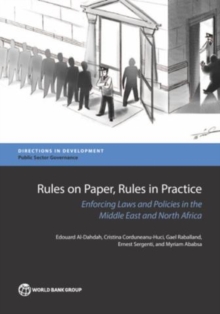
Income support for the poorest : a review of experience in Eastern Europe and Central Asia Paperback / softback
by Emil Tesliuc, World Bank
Part of the Directions in development series
Paperback / softback
Description
This study reviews the role and workings, with their strengths and weaknesses of last-resort income support (LRIS) programs in Eastern Europe and Central Asia.
It draws on a combination of household survey and administrative data for a large group of countries and detailed case studies for a smaller number of countries that span the spectrum of the income range in the region.
It thus combines the value of wide, comparable multi-country work with that of in-depth, country-specific probing on key themes.
The experiences of LRIS programs in Eastern Europe and Central Asia have demonstrated the technical feasibility of highly efficient poverty-targeted programs in the region.
The detailed case studies suggest how programs can improve their coverage, control error and fraud and be implemented effectively in decentralized settings.
This experience is pertinent to other regions as well, adding to the know-how for poverty targeting programs in middle and low income countries.
Perhaps especially importantly, the book shows that means testing can be accomplished in settings with sizeable informal sectors and at reasonable administrative costs.
The study also suggests that currently the role of last resort income support programs within the overall social protection systems of the region is often too small and that their eligibility thresholds should be revised and indexed, so that the programs continue to serve a meaningful swath of the low income households in each country.
Moreover the programs can be used as the nexus to weave together a variety of income supports and services for low income households
Information
-
Out of Stock - We are unable to provide an estimated availability date for this product
- Format:Paperback / softback
- Pages:220 pages
- Publisher:World Bank Publications
- Publication Date:30/06/2014
- Category:
- ISBN:9781464802379
Information
-
Out of Stock - We are unable to provide an estimated availability date for this product
- Format:Paperback / softback
- Pages:220 pages
- Publisher:World Bank Publications
- Publication Date:30/06/2014
- Category:
- ISBN:9781464802379










